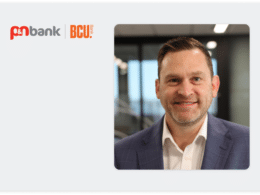Banks aren’t the only ones that can offer value to customers through Open Banking. In February 2022, legislation went into effect to make it easier for what were to be called ‘Trusted Advisers’ to access CDR data. This legislation aimed to reduce the barriers for well-regulated professions to access CDR data and drive uptake in the brokering, financial advice and accounting industries.
The Trusted Adviser (TA) model leans on existing accreditation held by brokers, financial advisers and accountants, meaning they don’t have to get accredited separately under the CDR to receive the data their customers share with them. However, they do have to work with an ADR that collects the data for them.
Uptake
Unclear but clearly promising
It’s hard to say how much uptake there has been by Trusted Advisers because they don’t have to be registered under the CDR. The model also hasn’t had a lot of time yet in the market. But due to the low barrier to entry, it’s very promising, and since late 2022, we’ve seen some businesses starting to adopt it and launch their use cases. Frollo and its parent company NextGen are currently working with Finsure and another major mortgage aggregator group under the TA model, and Frollo is working directly with AMP Advice using this model. Sherlok is another business using the Trusted Adviser model.
Use cases
An emerging range of opportunities
In the market, we’re seeing three key use cases for Trusted Advisers that are being deployed or considered – Lending, Financial Advice and Accounting.
Lending
One of the biggest short-term opportunities for Open Banking is in streamlining the mortgage application process, and brokers, as the intermediary between lenders and consumers, are right at the centre. As Trusted Advisers, they can use Open Banking data to save a significant amount of time onboarding new clients and processing loan applications, also saving banks time and money with better, more qualified applications.
Financial advice
It’s a given that financial advisers need an up-to-date financial profile of their clients when they prepare advice, and also when they review their advice. It can be a long and drawn-out process to gather this information, and it still might not provide a complete picture of a client’s financial position. Open Banking can streamline this process and save them and their clients time. It can also provide better, richer data that uncovers opportunities to improve their client’s financial position.
Accounting
Open Banking can give accountants, especially for businesses, access to better quality data in real time and remove the burden of manual processes, such as uploading bank statements into accounting software. It will save them time, improve their internal processes, improve the audit experience, validate financial activity and provide richer financial insights.
In action
Making an impact in real-time
Despite being a later addition to Open Banking, the examples below show how Trusted Advisers already use Open Banking to make an impact.
AMP Advice

The AMP Money Management service streamlines the advice process for financial advisers, mortgage brokers, accountants and their clients with Open Banking data. The service consists of a practice-branded money management app for clients, and a portal for Trusted Advisers. Using CDR data, they can see their client’s financial information in real-time and eliminate the need for clients to manually provide data. Advisers can also download CDR bank statements for use in credit applications, saving time and effort as well as improving accuracy.
Read more about how AMP Advice uses Open Banking
Finsure

Mortgage brokers typically spend a lot of time manually collecting and analysing multiple bank statements, payslips and assets and liabilities to understand their clients’ financial situation. The Financial Passport provides Finsure with a complete financial picture of their client’s position and enables them to use bank-verified data as a single source of truth for use in loan applications. Including a view of customers’ income, expenses, assets and liabilities, it helps brokers make a much more informed decision for their customers, saves time, and provides quality data for a smoother loan process.
Read more about how Finsure uses Open Banking
Sherlok

Sherlok is taking a unique approach to helping brokers with a common problem – retention. Less than 20% of customers will refinance with their existing broker. Sherlok uses Open Banking data to predict which customers are likely to leave their broker and alerts the broker so they can take action to retain the customer. They then help to proactively and automatically reprice those clients to a lower rate. If there’s a better rate with a different lender available, Sherlok will find it and help refinance the client.
Read more about how Sherlok uses Open Banking
This article is part of ‘The State of Open Banking 2024’, an industry report by Open Banking provider Frollo. The report provides a pulse check of the Consumer Data Right industry and an overview of exciting new use cases.










